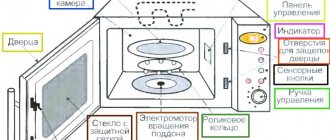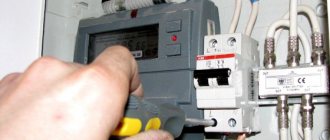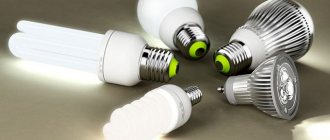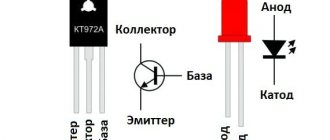It is difficult to imagine modern life without a microwave oven. If the equipment suddenly breaks down, then a slight panic begins, morning delays due to a long breakfast, and even the usual diet changes.
The most common problem is that the microwave works, but does not heat. There can be many reasons - from trivial improper operation to serious breakdowns. Let's figure out what to do in each specific case and how to fix the equipment.
Why doesn't the microwave heat up?
The most common reasons for equipment failure to perform its direct functions are quite banal and are based on improper operation of the microwave. Several points can be highlighted here:
- heating dishes together with metal objects;
- heating dishes in unsuitable containers - for example, with a gold rim or a tight lid;
- cheap and low-quality equipment - manufacturers specifically make it so that it is easier and cheaper to buy a new unit than to repair an old one;
- wear and tear of parts over time.
Adviсe
In order for the microwave oven to last longer and be less likely to break down, it is recommended to follow some tips for its operation:
- It is not allowed to turn on the microwave if no objects have been placed inside it, since the emitted waves will not be absorbed by anything and will begin to be reflected from the internal surfaces, which will negatively affect the condition of the device. A sufficient minimum load may be one glass of liquid.
- Do not place objects or utensils made of any type of metal into the microwave.
- Liquids and raw eggs should not be heated in sealed containers as they may explode if exposed to high heat.
Microwave users often have to deal with this problem when the microwave does not heat or heats weakly. The reasons for this may vary. Depending on the extent of the problem, you can have the device repaired or buy a new stove.
The principle of operation and design of a microwave oven
To understand why the microwave stopped heating and how to fix it, you need to understand the design of the equipment.
Microwaves, namely high-frequency radiation that heats food, are created by a magnetron. It is connected to the camera by a rectangular waveguide, which, in turn, can be covered with a mica plate or a plastic cover.
The power supply is provided by a transformer, which is assisted by a multiplier consisting of a diode bridge and a capacitor. The fuse protects equipment from overloads and short circuits. The fan cools the magnetron and drives warm air into the chamber, which speeds up the heating of the dish.
You can set the mode and time for heating food on the control panel. It can be either mechanical or sensory.
How does a microwave oven work?
In order to find out why the microwave stopped heating, first of all, you need to understand how the device works. So, the magnetron generates an electric field, which, with the help of a waveguide, moves into the compartment with food. Since the products contain water, it means that they are all susceptible to heating, which occurs due to the existing dipoles (molecules). The molecules have negative and positive charges at opposite ends. Under the influence of an electric field, the dipoles begin to sway, turn over and push. As a result, a friction force is generated. And, as you know, friction creates heat. This whole process causes the food to heat up.
But it may also happen that the dish placed for heating turns out to be poorly heated or completely cold. This means only one thing: a device that was working properly has broken down.
The simplest causes of problems and tips for eliminating them
Microwave oven spins but doesn't heat food? In addition to the lack of heating, pay attention to additional signs - for example, the microwave is humming or making a lot of noise.
First of all, you should look at the instructions, since they contain tips that can help you understand the reasons for the malfunction of the equipment. But the main problems are similar, so we will analyze them. Let's start with the simplest breakdowns that can be fixed at home.
Insufficient voltage
The required voltage in the network for proper operation of the microwave is 220 V. If this figure is lower even by 5-10 V, then the equipment will heat poorly, weakly, or every once in a while - depending on the voltage value. To prevent such surges, it is necessary to install a voltage stabilizer.
Another option in which a lack of voltage may occur is to connect large household appliances such as a refrigerator or washing machine to the same outlet, or even use a double/tee. Such actions are unacceptable, since the microwave oven must have its own free outlet.
Technical difficulites
It happens that the problem is not in the microwave oven itself, but, for example, in the wire or socket. To make sure that this is exactly the problem, you just need to connect the equipment to another outlet and carefully inspect the cord. If problems are found, either the outlet or the cord will need to be replaced.
Door
The microwave is designed in such a way that it will never turn on when the door is open. This is facilitated by special latches on the doors. If they are broken or simply do not fit tightly, then the microwave may not heat the food as well or may not heat the food at all. In this case, there are only two options - change only the latches, or the entire door.
Wrong mode
The reason that the heating in the microwave does not work may be due to ordinary human carelessness. This happens if the previous action of the microwave was defrosting, and then they forgot to turn off or change the function. In this mode, food will never warm up. All that is required in this case is to set the heating mode and, if necessary, increase the power.
If all of the above points have been checked, but the microwave still does not heat food or does it poorly and for a long time, then, most likely, a really serious breakdown has occurred, which is not always possible to fix without a professional.
Non-standard use of microwaves
A microwave oven is one of the most versatile appliances. There's so much that's not built into this miniature box! Each of the irreplaceable functions of the microwave is described in the instructions. But there is something that no instruction manual will tell you:
- This miracle of technology will help you forget about tears while cutting an onion. Just put the cleaned head in the microwave for half a minute, and the problem is solved!
- If you have old spices stored at home, heating them in the microwave for about 15 seconds will restore their original flavor.
- If you urgently need to melt butter or margarine, a microwave is ideal for this purpose. Simply place the briquette on a plate and microwave for one minute.
- Stuck chips can be brought back into life by drying them in the microwave on paper towels or napkins.
- But everyone’s favorite crackers, after being in the miracle oven for half a minute, will experience a rebirth.
- Bread, on the contrary, can be restored to softness and freshness. To do this, place the stale piece in a damp towel and microwave it.
- You can use the microwave to make delicious bacon chips. To do this, place the slices on a napkin and send them to dry.
- If frozen food is wrapped in paper, it will not end up falling apart.
- If you want to get chocolate paste, and you just happen to have a chocolate bar lying around at home, then the microwave will be an excellent helper for this.
Serious faults
In this case we are talking about the components of technology. They fail, so the glass tray spins, the light is on, but the microwave does not heat. Let's figure out how to understand what exactly is broken and how it can be fixed.
Fuse
A fuse malfunction is not a big deal, since it is designed to absorb the entire blow, thus protecting more expensive parts.
It is usually hidden in a special protective casing, since it is part of a high-voltage circuit. It is a small glass flask with metal caps at the end.
A wire twisted with a spring is attached to these caps so that the blow falls precisely on the fuse. If it breaks, the whole problem lies in the fact that the wire comes off from one end or the other.
Upon inspection, there should be no visible signs of fuse failure, for example, blackening or a burnt smell. The part can be tested with an ohmmeter or tester. If there is at least a little resistance, everything is fine. If not at all, then the fuse must be replaced or repaired. The last option is suitable only for those who have soldering skills.
To repair, you need to remove the cap and solder the wiring in place. After this, it is worth collecting everything in its original form and checking the functionality of the equipment. The procedure is simple, so most often the microwave starts.
Magnetron
The magnetron is one of the most important components of a microwave oven. There may be several problems associated with it:
- Weak contacts - they heat up, so the equipment disrupts its operation. In this case, you just need to squeeze them a little with pliers.
- Drops of frozen metal or traces of burning may form on the cap of the magnetron antenna. It is worth getting rid of them using sandpaper, which is used to polish the entire cap until it shines - the higher its conductivity, the better the performance of the equipment.
- If there is a hole in the cap, then it must be removed and the condition of the metal located under it checked. If the metal is intact, then the problem is only in the cap - it needs to be replaced. If the metal is damaged, then the microwave fails. There are two options to get out of the situation - replace the magnetron (expensive) or buy a new microwave oven (also expensive).
Mica plate
This plate is located inside the heating compartment, so it is easy to check even just visually.
Often, with insufficient care of the equipment, carbon deposits form on it and fat accumulates, which interfere with the normal operation of the microwave. They can cause a characteristic crackling sound and even sparks. If the situation is completely neglected, a fire may occur.
This problem can be easily dealt with - sandpaper will help. You just need to unscrew the plate with a screwdriver and then clean it to perfect condition. After that, screw it back and check the functionality of the microwave oven.
Sometimes you can notice holes in the plate. They are often accompanied by an unpleasant odor and sparks. This situation can only be corrected by purchasing and installing a new part.
Capacitor
If the microwave not only does not heat up, but also makes a lot of noise, most likely the capacitor is broken - it has burned out. Its serviceability is checked by measuring resistance using a tester:
- if the arrow does not move, this is a break, the capacitor is definitely not working;
- if there are slight deviations of the needle, the capacitor is broken, it should also be replaced;
- if the arrow approaches the “infinity” icon, the capacitor is working.
Diode
The second reason why a microwave may not heat, but still hum, is a diode failure. Usually it is accompanied by a large release of heat from the condenser - it will become hot. But it is difficult to fully test this theory, so the diode is replaced even if it is simply assumed to be broken.
Transformer
If a large amount of smoke is generated, there is no need to guess what has broken down - we are talking about a malfunction of the transformer. If it breaks, there may be no smoke, but the food will still not heat up.
In this case, check the winding - its voltage during operation of the furnace should be 220 V. If the value decreases, then we can talk about an interturn short circuit.
It is possible to make a new winding for a transformer, but this is a complex process that requires special skills and effort. It’s easier to buy and install a new part, otherwise the stove will remain faulty.
Inverter
The inverter is a smart system that itself determines the temperature of the food and the required degree of heating. This is done with the help of sensors, which can break down and give incorrect data - the equipment simply will not heat up the food. That is, we can say that it is the inverter that makes the microwave operate in a specific mode.
If the inverter breaks down, it is simply replaced with a new one.
Control block
The problem with a control unit failure is that only a professional can determine it. An ordinary person should definitely not go there himself, since there is a risk of making things worse and damaging expensive parts. The control board can be replaced or simply reflashed.
Timer
A broken timer lives its own independent life, so it decides when to stop heating food and whether it is worth doing it at all. The part needs to be replaced, for this it is best to contact a specialist.
The microwave is humming: check the capacitor
If the device hums when turned on, there is a possibility that the capacitor has broken. It’s easy to check its serviceability: you need to take an ohmmeter and connect it to the part. If everything is in order, then the ohmmeter needle moves. And if it stops, then the capacitor has failed, and because of this the stove is noisy.
Important:
Before replacing or checking the capacitor, it must be completely discharged!
If you notice a burning smell or something crackling inside while the microwave is operating, after watching this video you will understand what’s wrong. It shows how you can repair a microwave oven if it sparks.
Fault Detection
If you still have questions about how exactly to find a breakdown, you can follow the following instructions:
- Measure the voltage of the outlet to which the microwave is connected - even minor deviations can greatly affect the operation of the equipment.
- Check the operation of the door latches.
- For a de-energized microwave, remove the top cover to gain access to the internal parts. If repairs are required, remove the back cover.
- Check fuses visually. Burnt specimens are immediately visible - they are swollen and black. If there are no such traces, then you need to check the resistance with a tester.
- Check the voltage in the capacitor and diodes with an ohmmeter.
- After the microwave has completely cooled down, visually check the magnetron and its contacts. If there are no external problems, then it is worth assessing the resistance of the threads.
Magnetron
If, when checking the device, you did not find any breakdowns, then it is likely that the problem is in the magnetron. The sign by which magnetron failure is determined is strong noise (hum) during operation of the device. If the microwave is humming and not heating, then you need to look at the magnetron to see if there are cracks or carbon deposits there. If the breakdown is not visible visually, then check with an ohmmeter. If the magnetron burns out, then you need to buy the same one. It should have the same parameters and size.
Advice:
DIY repair
There are not many problems with a microwave oven that you can solve yourself. If you are unsure of your abilities, it is better not to start repairs at all. Before you pick up something to do, you need to check it for charge.
The essence of self-repair is only to replace broken parts with new ones. You won’t be able to repair the parts yourself without experience. The operating principle is as follows:
- The fuse is a simple and cheap consumable that performs very important functions, so it is advisable to replace it at the first sign of a problem. To select a suitable part, it is recommended to take the spoiled part with you to the store. It is best not to use specimens with thin wire - they are not as reliable;
- capacitors - easy to check with a capacitance measuring device, and also easy to replace. Caution: The capacitor may retain an electrical charge for a long time, which may result in electric shock;
- diodes - it is difficult to thoroughly check their performance, so they are replaced if there are no other objective reasons for the food not heating. It is easier to replace the diode than to examine it at home;
- magnetron - easy to replace, but the purchase itself can be expensive. It makes sense to think about buying new equipment. If you decide to buy a part, then you should take the spoiled copy to the store or at least copy its serial number;
- transformer - replacing it with your own hands is dangerous. Not recommended for beginners - because... This is a complex procedure that requires basic knowledge of electronics (you need to be able to calculate the nominal resistance of the transformer windings and use an ohmmeter).
A win-win option is to call a specialist. He will always accurately, quickly and without problems determine what exactly the breakdown is, and will also immediately repair the microwave, if you do not have to order rare parts. The easiest way to “accept” the work of a master is to simply warm up a glass of water.
Repair rules
In order not to harm the equipment and yourself during repairs, you must follow a few simple rules:
- Always unplug the cord from the outlet before starting repairs.
- Use protective dielectric gloves.
- Only use tools with insulated handles.
- Do not operate a disassembled, empty, open or broken microwave oven.
- Discharge the capacitor before repairing.
- Don't forget any metal objects inside.
- Do not make holes in the housing.
How to fix simple problems yourself
How can this be? The microwave seems to be broken, but continues to work: the plate is spinning, the lights are on, and the food is cold.
The device stops heating for several reasons. Before disassembling the housing and looking inside the microwave, you should study the operating instructions, which indicate the most common breakdowns and how to fix them. First, let's deal with the simplest problems:
- One of the common reasons why a microwave oven stops heating is insufficient voltage. For normal operation, the device requires a voltage of 220 volts, a decrease of which by just 10-20 volts will be insufficient to heat food. This can be eliminated by installing an uninterruptible power supply.
- Network overload. To prepare food, especially on the eve of the holidays, several electrical appliances are often used. Some sockets are not able to withstand such a load, so the device does not work fully or turns off altogether. In this case, do not use tees and carriers, but connect each device to a separate outlet or use it in turn.
- Door latch malfunction. In order for the door to fit tightly, you need to adjust the latch.
If such causes have not been found or have already been eliminated, and the stove still does not heat, then the problem lies even deeper.
Features of repair of some brands
The causes of breakdowns for different brands are identical, but the repair of a certain brand may differ slightly from its analogues. Let's look at the features of the most popular brands of microwave machines.
| Samsung | Microwave ovens from Samsung rarely break down - the mechanical parts are very strong, so problems with latches can be eliminated by almost 99%. If there is a malfunction, you should immediately check the electronics. |
| Rolsen | The Rolsen brand cannot boast of impeccable reliability. Breakdowns and even short circuits of equipment are common, so it’s worth looking for a different brand. |
| Panasonic | Budget models from the Panasonic brand often suffer from rust. This will not directly lead to malfunctions, but will accelerate the wear and tear of the equipment. |
| LG | Another brand of microwave ovens that is reliable. But there are also two weak points in the LV: fuses and capacitors - they must be checked first. |
Also popular brands of equipment include:
- Sharp is a popular brand with a wide range of sizes, but the actual size of the camera may be smaller than stated;
- Supra is a budget equipment with normal quality, sometimes breakdowns occur, but most customers are satisfied;
- Elenberg is also a budget brand, but has a short warranty - only for a year;
- Bork - models are distinguished by high functionality and stylish appearance, but we must take into account that the brand is Russian, and the spare parts are Chinese;
- Scarlett is a British brand that wanted to produce equipment in Russia, but still chose China;
- Daewoo is one of the leaders in electronics, simple controls and stylish models, low cost and good quality. There are retro models;
- Erisson - simple, concise and budget models. Ideal for a cottage or rented apartment;
- Vitek is a very popular brand, there are many models with different numbers of functions.
What to do
First of all, you need to identify the cause of the microwave oven malfunction. For example, improper operation or internal malfunctions of functional elements.
When doing DIY repairs, you should adhere to the following rules:
- always disconnect the device from the network;
- use personal protective equipment (insulator gloves);
- use of tools with well insulated handles;
- You cannot turn on a disassembled device;
- Do not leave metal objects in the chamber;
- It is not recommended to make additional holes in the housing.
If you do not have specialized tools and skills in repairing household appliances, it is better not to risk expensive equipment and your own safety. In this case, you should contact repair services.
Useful articles, news and reviews on our Yandex Zen channel
How much does the repair cost?
Even if the repair is done with your own hands, it will still require small expenses - at least for new spare parts for the microwave oven. But it’s difficult to call such expenses significant:
- about 50 rubles for a fuse;
- 100–150 rubles - for a capacitor;
- 15–200 rubles - per diode.
The most expensive part is the magnetron - it will cost 1,500–2,000 rubles. A more specific cost depends on the brand and model of equipment.
Not all problems can be solved by yourself; you may have to contact a specialist. The prices are approximately as follows:
- 200–250 rubles - cable replacement;
- 300–350 rubles - replacement of sensors;
- 400–500 rubles - door repair;
- 500–600 rubles — repair of the waveguide;
- 650–700 — replacement of the heating element.
Of course, these are average prices, which may vary by city.
Transformer primary winding
You need to check the voltage of the primary winding of the transformer using a tester. The operating voltage should be 220 W.
Do not forget to disconnect the household appliance from the electricity before repairing it!
And remember, even when switched off, any equipment can cause an electric shock if used incorrectly. Therefore, if you are not confident in yourself and your skills, it is better to entrust microwave oven repair to specialists.
Fault prevention
To avoid malfunctions in the operation of the microwave oven, you need to read the instructions for using the equipment, and also adhere to simple rules:
- choose the right dishes - exclude metal containers and even metal coating, gold and silver inclusions. The equipment may begin to spark inside and even catch fire;
- Do not close containers tightly - another requirement for dishes. The steam should escape easily;
- do not heat alcohol;
- do not use extension cords;
- do not use the microwave as a stand, despite the flat top cover;
- place the microwave correctly, following the manufacturer's instructions;
- When baking vegetables with skins, make cuts with a knife;
- do not turn on an empty microwave - this is harmful to equipment;
- do not try to reheat or boil eggs and other food unsuitable for microwaves;
- do not slam the door to avoid damaging mechanical parts;
- use a special plastic cap - this will help avoid contamination, simplify maintenance and extend the service life of the microwave.
The best microwave cookware is made of transparent heat-resistant glass. It is this material that promotes uniform heating. If you use only such dishes, then you can forget about problems when the stove heats the food and not the plate, or does not heat the middle.
Practice shows that food is best heated in transparent oval-shaped containers. Of course, other items made of glass, porcelain, ceramics and even special plastics - polypropylene, polyamide - are also suitable.
Rules for caring for a microwave oven
In order not to have to figure out why the microwave oven does not work after a short period of use, you need to properly care for your household appliances. Rules for caring for your microwave:
- The heat-resistant glass tray must be washed with liquid soap.
- Do not use abrasive powders to clean the grates, they just need to be "soaked".
- Promptly remove any remaining fat or food from the surface of the chamber.
- The most unpretentious in maintenance is a microwave with internal walls made of stainless steel; they can even be cleaned with abrasive agents.
- Under no circumstances should the oven be cleaned or washed while it is on.
- After cooking, wipe the oven with a microfiber or lint-free cloth dampened with plain water.
- To remove condensation from the walls of the microwave oven, wipe them with an ordinary napkin.
- If the oven is very dirty, do not use the grill or convection mode, otherwise the grease will turn into brown spots.
- Use cleaning products labeled as Microwave cleaner.
- There is no need to touch the ventilation, as well as the compartment in which the magnetron is located.
These simple tips will help your microwave operate longer.
How does food heat up in a microwave?
The essence of this process lies in special dipole molecules, which are positively charged on one side and negatively charged on the other. Almost all food consists of this kind of molecules, but there is especially a lot of them in water, which is also part of any food. Here's how the heating happens:
- When there is no electric field, these molecules are scattered randomly. But when the field appears, they instantly line up in straight lines, with their positive sides in the same direction.
- If you turn the plate, which is what the oven does, then the molecules will turn around following the electric field.
- Microwaves have a frequency of 2450 MHz; as a result of calculations, it can be found that in one second molecules change their position almost 5 billion times. The friction that actively arises in this case releases a huge amount of heat, warming up the food.
- First, only the surface of the food is heated, and then, due to thermal conductivity, the temperature inside it also rises.











